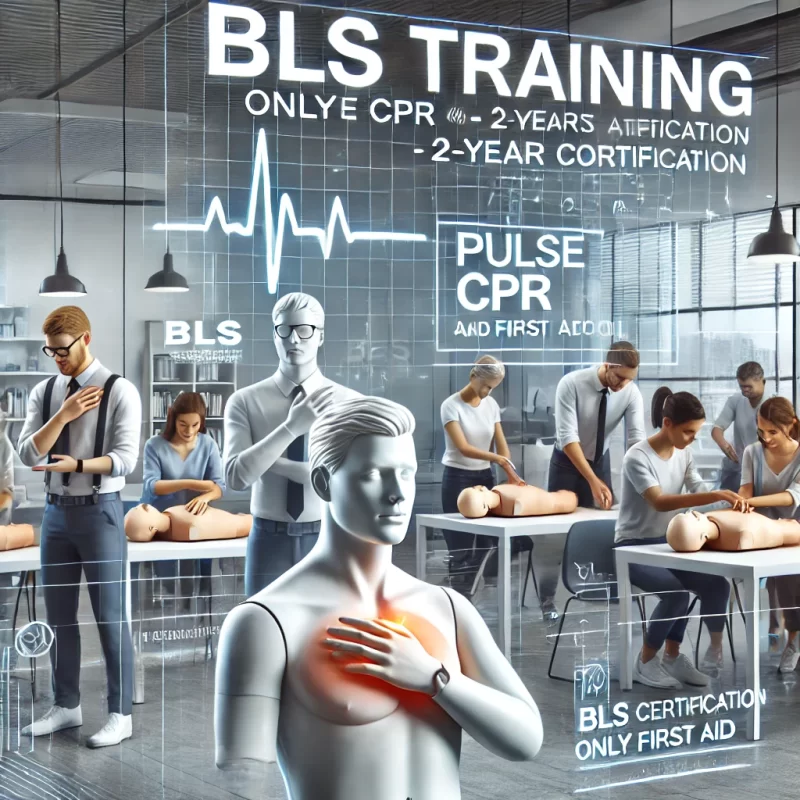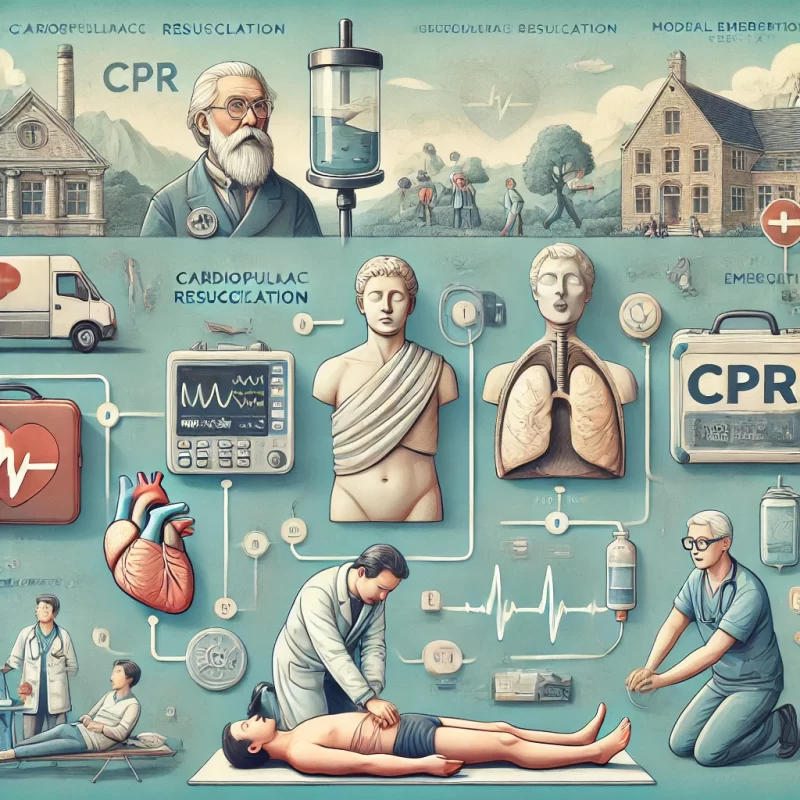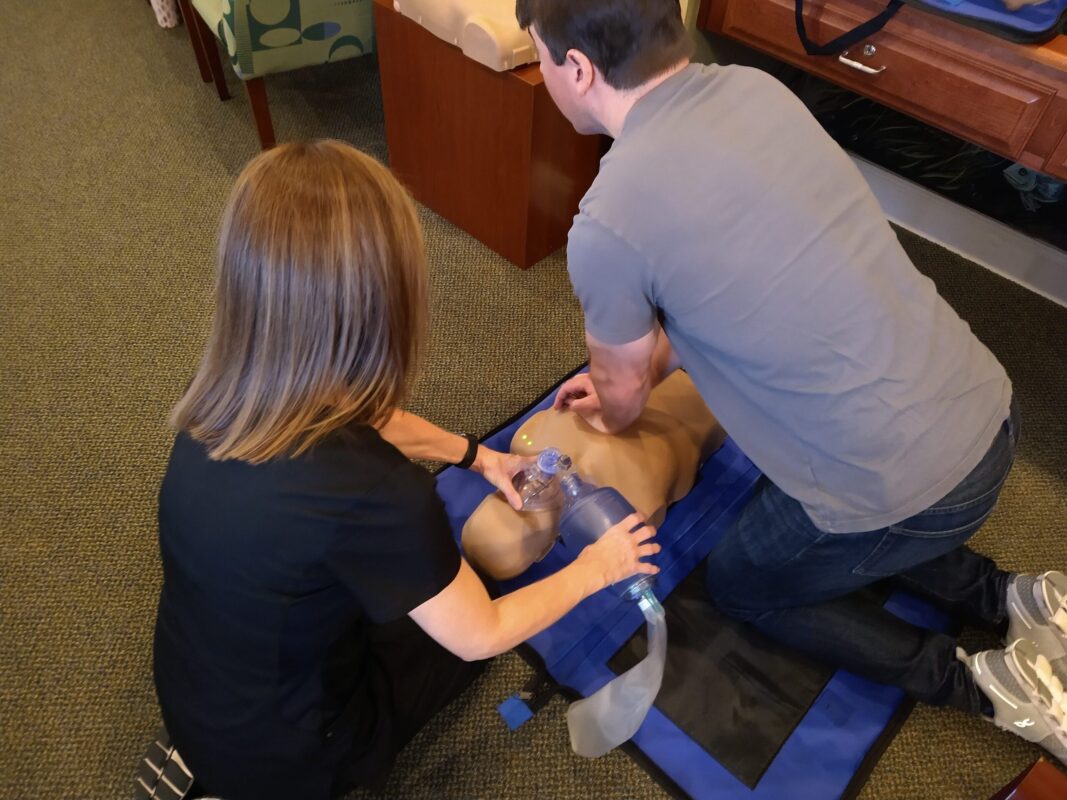Highlights of CPR dating back to the 1700’s
1700’s – 1800’s
1740 The Paris Academy of Sciences officially recommended mouth-to-mouth resuscitation for drowning victims.
1767 The Society for the Recovery of Drowned Persons became the first organized effort to deal with sudden and unexpected death.
1891 Dr. Friedrich Maass performed the first equivocally documented chest compression in humans.
1900’s
1903 Dr. George Crile reported the first successful use of external chest compressions in human resuscitation.
1904 The first American case of closed-chest cardiac massage was performed by Dr. George Crile.
1950’s
1954 James Elam was the first to prove that expired air was sufficient to maintain adequate oxygenation.
1956 Peter Safar and James Elam invented mouth-to-mouth resuscitation.
1957 The United States military adopted the mouth-to-mouth resuscitation method to revive unresponsive victims.
1960’s
1960 Cardiopulmonary resuscitation (CPR) was developed. The American Heart Association started a program to acquaint physicians with close-chest cardiac resuscitation and became the forerunner of CPR training for the general public.
1963 Cardiologist Leonard Scherlis started the American Heart Association’s CPR Committee, and the same year, the American Heart Association formally endorsed CPR.
1966 The National Research Council of the National Academy of Sciences convened an ad hoc conference on cardiopulmonary resuscitation. The conference was the direct result of requests from the American National Red Cross and other agencies to establish standardized training and performance standards for CPR.
1970’s
1972 Leonard Cobb held the world’s first mass citizen training in CPR in Seattle, Washington called Medic 2. He helped train over 100,000 people the first two years of the programs.
1973 Second National Conference on CPR and ECC.
1979 Advanced Cardiovascular Life Support (ACLS) is developed after discussions held at the Third National Conference on CPR.
1980’s
1981 A program to provide telephone instructions in CPR began in King County, Washington. The program used emergency dispatchers to give instant directions while the fire department and EMT personnel were en route to the scene. Dispatcher-assistedCPR is now standard care for dispatcher centers throughout the United States.
1983 AHA convened a national conference on pediatric resuscitation to develop CPR and ECC Guidelines for pediatric and neonatal patients.
1985 Fourth National Conference on CPR and ECC.
1988 AHA introduces first pediatric courses, pediatric BLS, pediatric ALS and neonatal resuscitation, cosponsored with The American Academy of Pediatrics (AAP).
1990’s
Early Public Access Defibrillation (PAD) programs are developed with the goal in mind to provide training and resources to the public so they are able to aid in the successful resuscitation of sudden cardiac arrest victims.
1992 Fifth National Conference on CPR and ECC.
1992 International Committee on Resuscitation (ILCOR) founded
1999 First task force on first aid was appointed. First International Conference on Guidelines for CPR and ECC
2000’s
2004 AHA and ILCOR releases a statement regarding the use of AEDs on children. It is determined that an AED may be used for children 1 to 8 years of age who have no signs of circulation.
2005 AHA developed the Family & Friends® CPR Anytime® kit, a revolutionary product that allows anyone to learn the core skills ofCPR in just 20 minutes. The kit contains everything needed to learn basic CPR, AED skills and choking relief anywhere, from the comfort of your home to a large group setting
2005 The 2005 International Consensus on ECC and CPR Science with Treatment Recommendations (CoSTR) Conference produces the 2005 American Heart Association Guidelines for CPR & ECC. These Guidelines reveal a new compression: ventilation ratio as well as changes to AED usage.
2008 The AHA releases a statement about Hands-Only™ CPR, saying that bystanders who witness the sudden collapse of an adult should dial 911 and provide high-quality chest compressions by pushing hard and fast in the middle of the victim’s chest.
2010 The 2010 International Consensus on ECC and CPR Science with Treatment Recommendations (CoSTR) Conference produces the 2010 American Heart Association Guidelines for CPR & ECC; 50th Anniversary of CPR.



